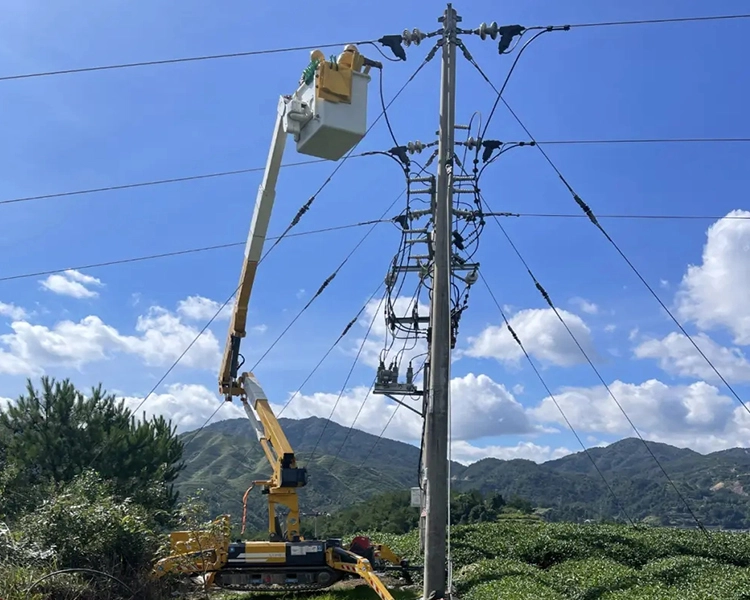en
+
A transformer is a measuring and protection device used in power systems. Its main function is to convert high voltage or large current into standard small voltage or small current for use in power equipment or instruments. Transformers are usually used to monitor voltage and current, and cooperate with relay protection devices to protect equipment in power systems.
Transformers are divided into two categories: current transformers (CT) and voltage transformers (PT). They can convert high voltage and large current into lower, safe standard signals for easy use of measurement and control equipment.
Basic structure
The structure of the transformer varies depending on the type, but it usually consists of the following basic parts:
1. Core: The core of the transformer is usually made of high magnetic permeability silicon steel sheets, which can effectively guide magnetic flux and reduce energy loss. The core of the current transformer is mainly used to sense the current on the primary side to the secondary side, while the core of the voltage transformer is used to sense voltage changes.
2. Primary winding: The primary winding is directly connected to the power system. The primary winding of the current transformer is usually composed of thick and short wires, while the primary winding of the voltage transformer is wound with thinner wires and carries high voltage.
3. Secondary winding: The secondary winding is connected to the measuring instrument or relay protection device. The secondary winding of the current transformer generally has more turns to reduce the high current to the standard current; the secondary winding of the voltage transformer is used to convert the high voltage into a low voltage signal.
4. Insulation and casing: The winding and core of the transformer are usually installed in an insulating casing to ensure the insulation performance of the equipment and prevent leakage and other electrical accidents.
Working principle
1. Working principle of current transformer (CT)
The current transformer uses the principle of electromagnetic induction to convert the large current on the primary side into the small current on the secondary side.
- The coil on the primary side is connected in series in the main circuit and directly passes the primary current.
- The coil on the secondary side is connected to the measuring instrument or relay protection device, and the induced current generates a secondary current proportional to the primary current.
2. Working principle of voltage transformer (PT)
The voltage transformer is also based on the principle of electromagnetic induction, converting high voltage into low voltage.
- The primary winding is connected in parallel to the power line and bears the system voltage.
- The secondary winding is connected to the measuring device and provides the induced secondary voltage to the measuring instrument.
Working characteristics
1. Linear working range: The transformer shows good linearity within its rated working range, that is, the primary current/voltage and the secondary current/voltage are proportional. When the load changes, the transformer can ensure that the secondary output maintains an accurate proportional relationship with the primary side.
2. Good insulation performance: Since the primary winding is directly connected to high voltage or high current, the transformer usually has good insulation performance to ensure the safety of the system and personnel.
3. Secondary side safe voltage and current: The current transformer converts the primary high current into the secondary low current (usually 5A or 1A), and the voltage transformer converts the high voltage into the secondary standard low voltage (usually 100V or 110V). This enables the measurement and protection equipment to operate under safe working conditions.
4. High measurement accuracy: The transformer must have good accuracy, especially when measuring electric energy or protecting equipment. The error of the transformer will directly affect the measurement accuracy of the system and the reliability of equipment operation.
5. Protection function: Another important function of the transformer is protection. The current transformer can quickly feed back the fault current to the relay protection device, thereby quickly cutting off the faulty part and protecting the equipment from damage.
6. Magnetic saturation characteristics: The core design of the transformer will cause it to produce magnetic saturation when it exceeds a certain current or voltage, resulting in increased measurement errors. Therefore, the design of the transformer must ensure that saturation does not occur within the normal operating range.
Application scenarios of transformers
- Power system measurement: Transformers are used in substations, power lines and power stations to measure high voltage, high current and voltage.
- Power metering: In commercial and industrial situations, transformers are connected to electric energy meters for power metering.
- Relay protection system: In the power system, when a short circuit or overload occurs, the transformer transmits the current or voltage signal to the protection device to quickly cut off the faulty line.




